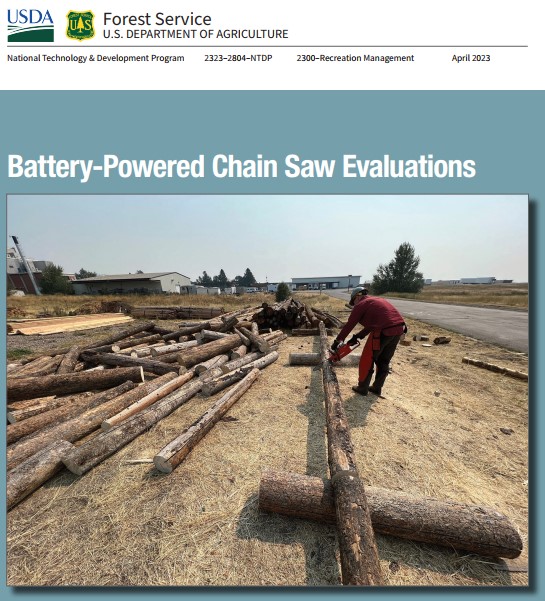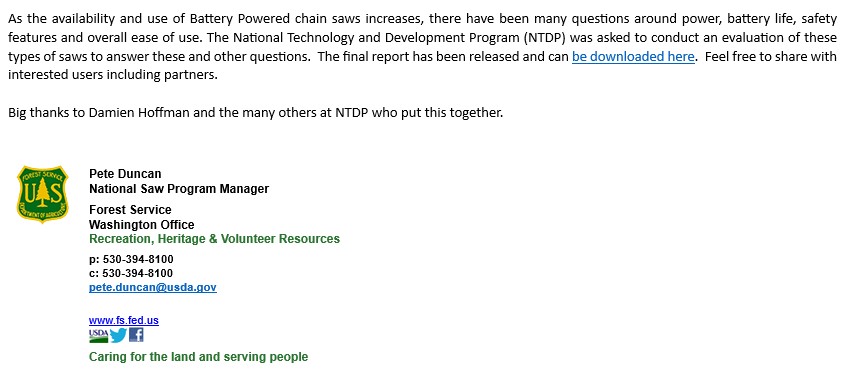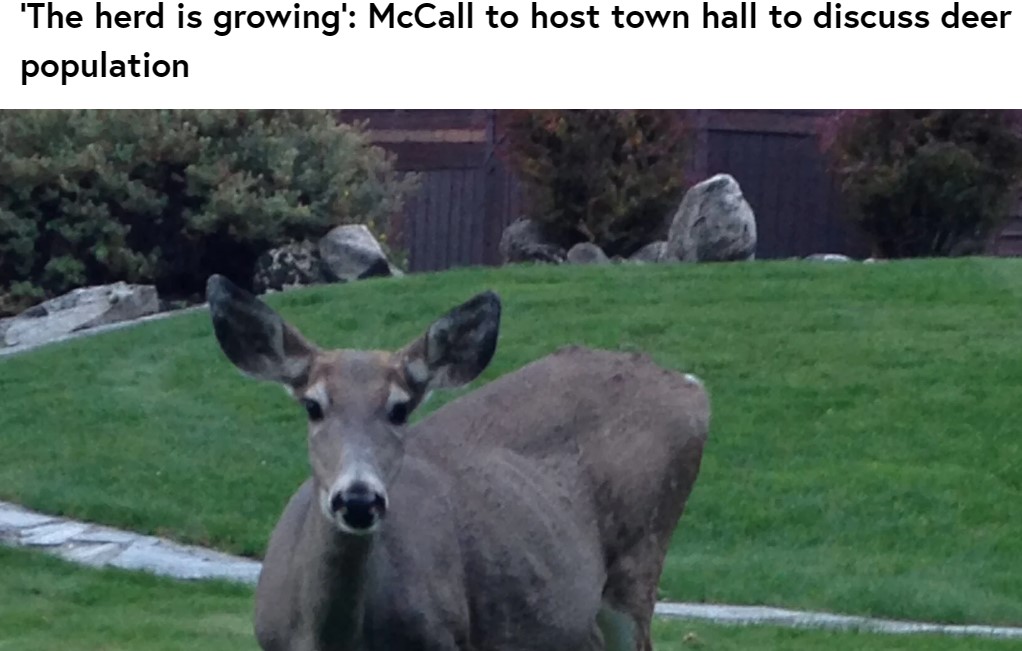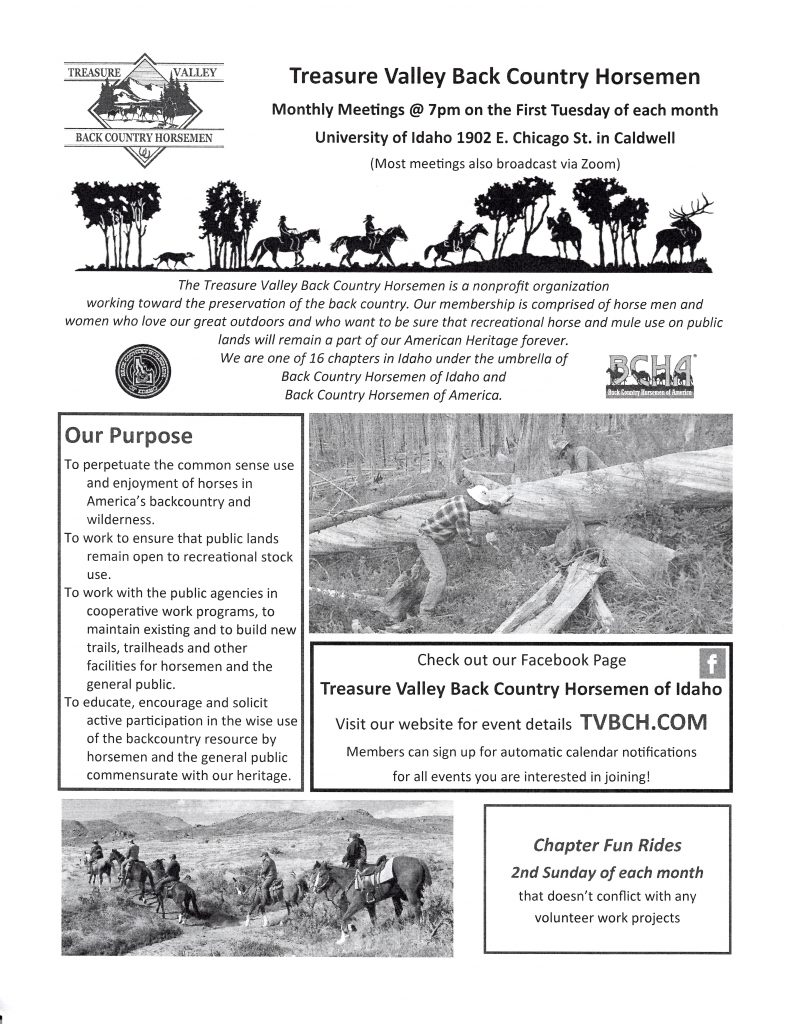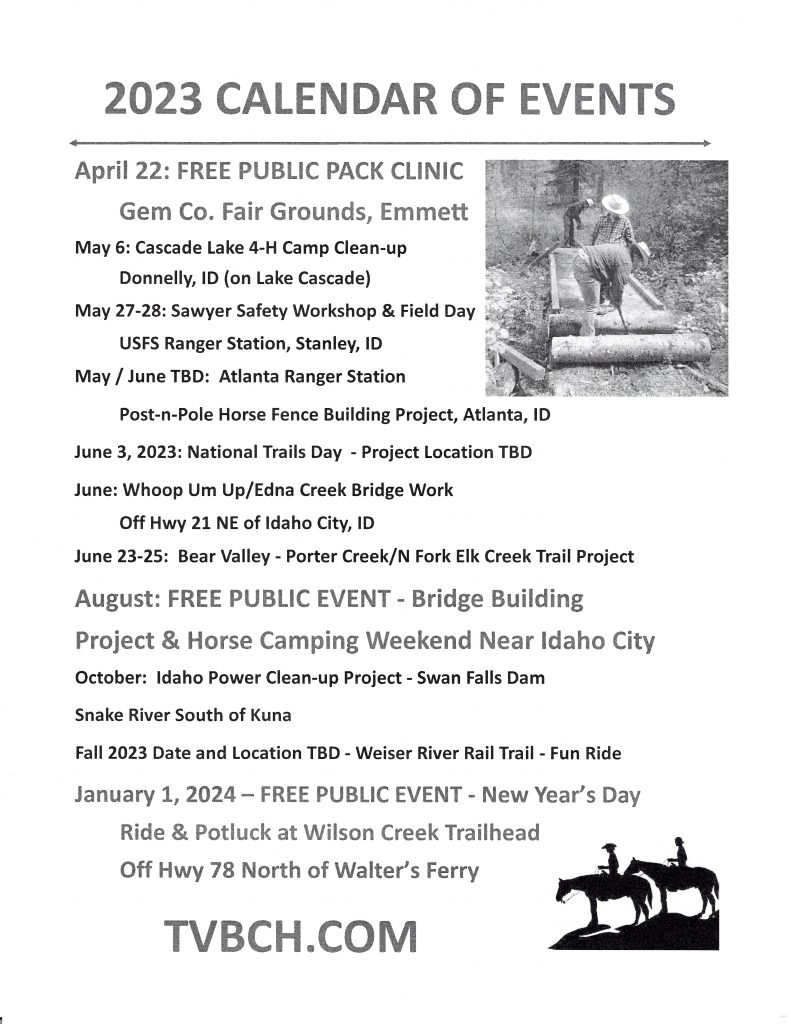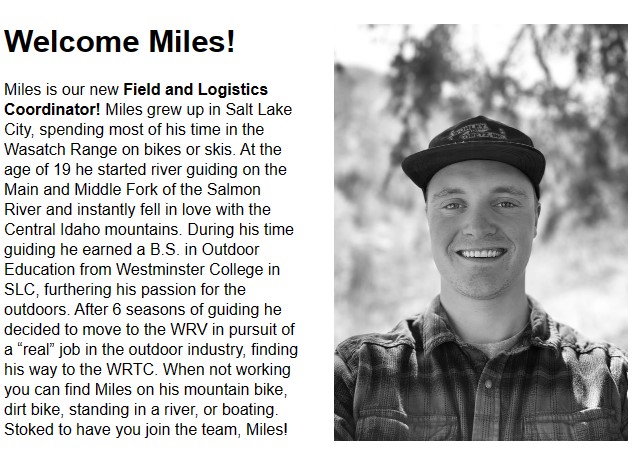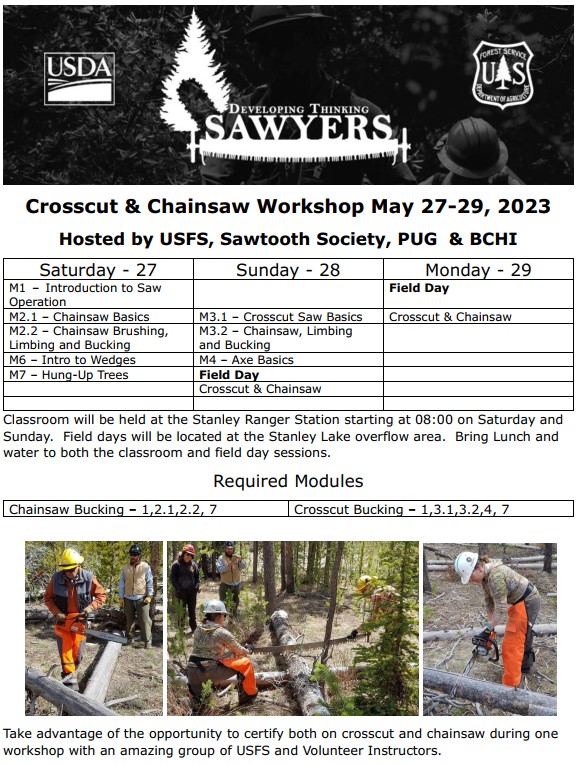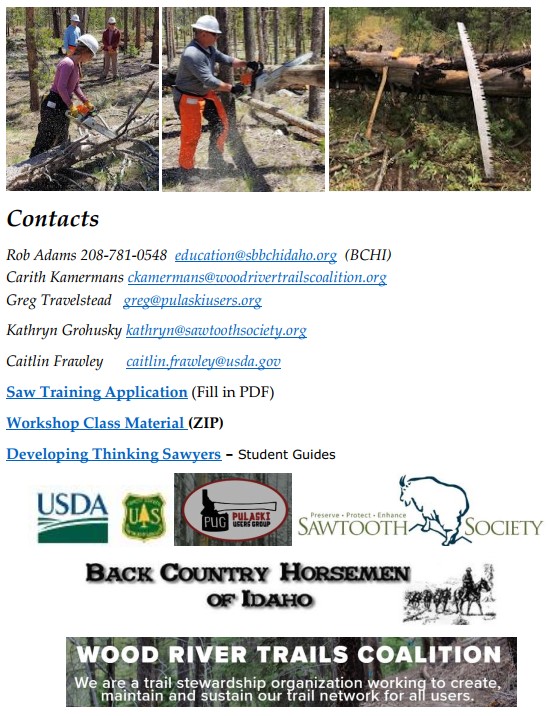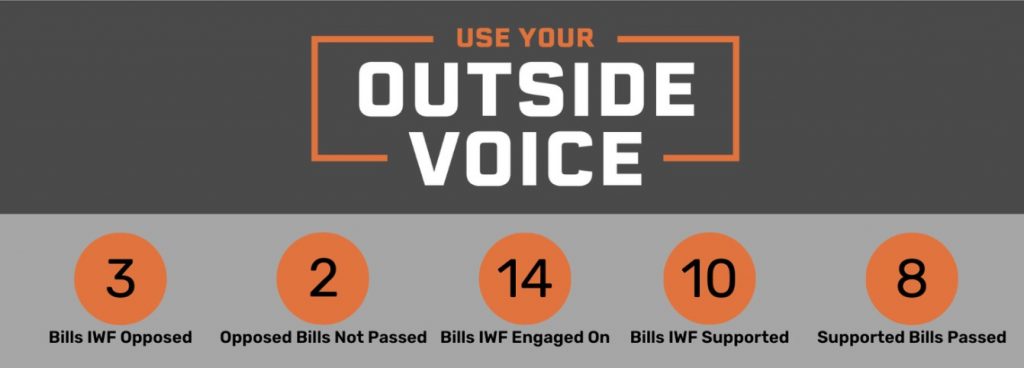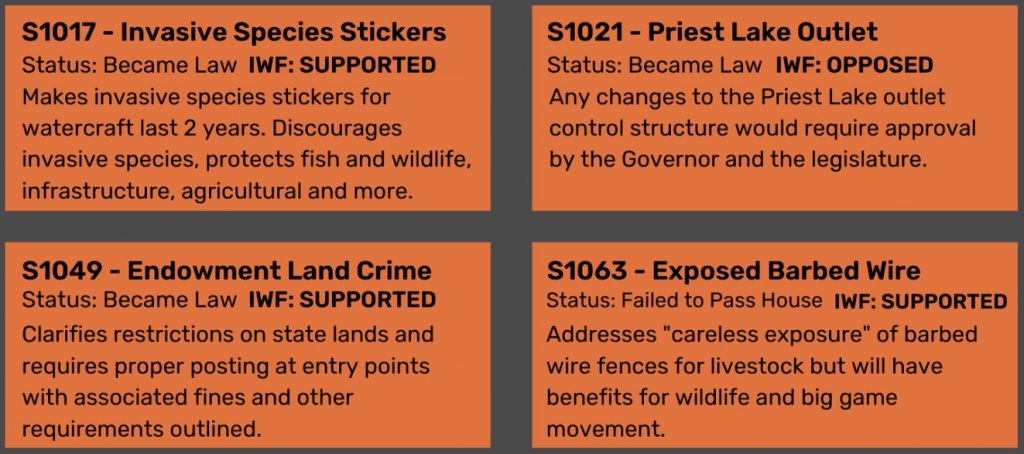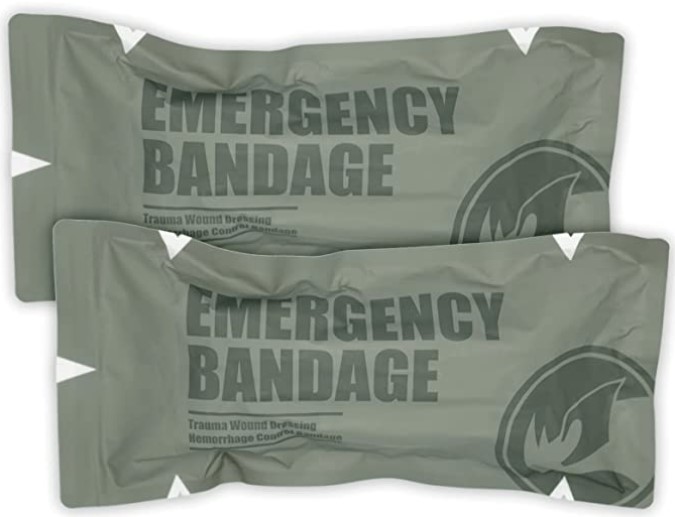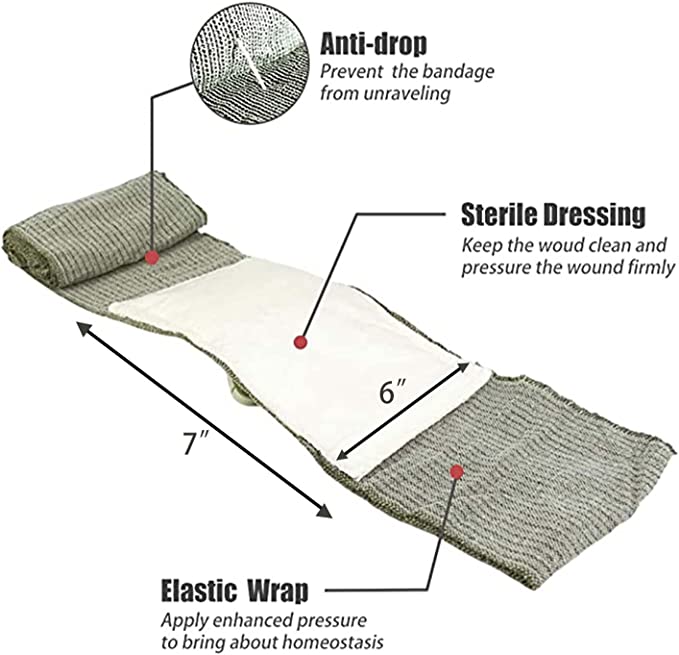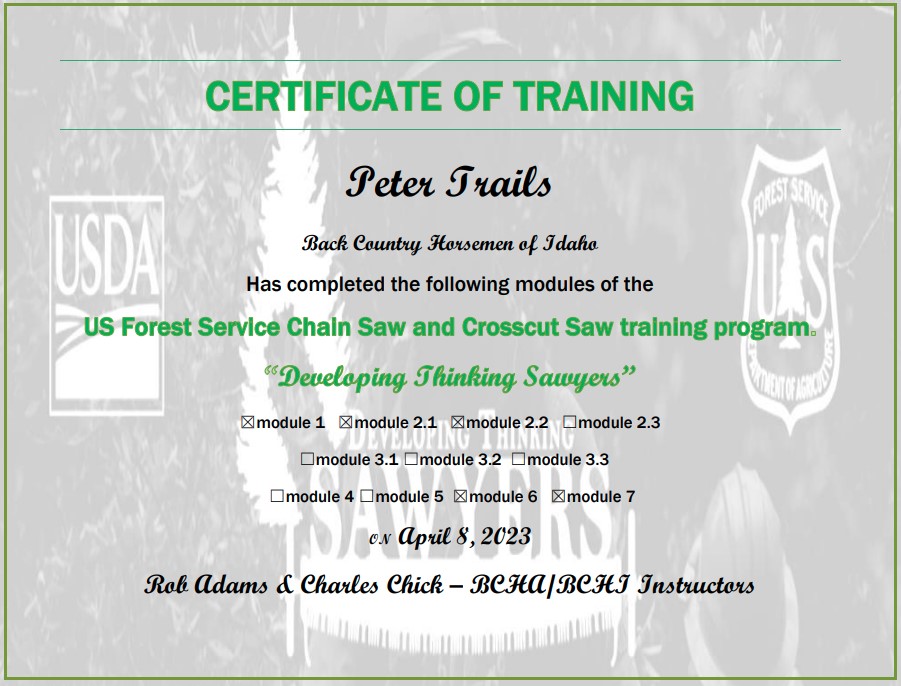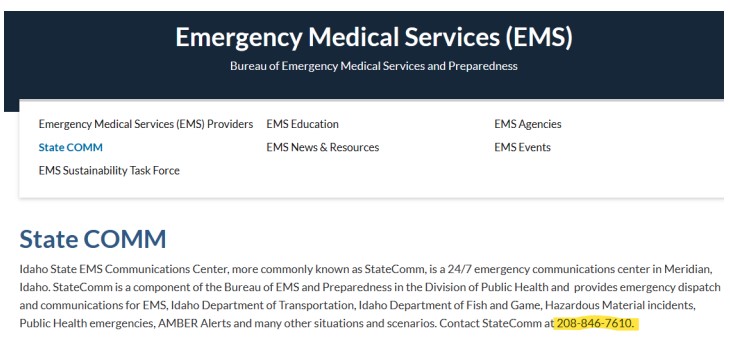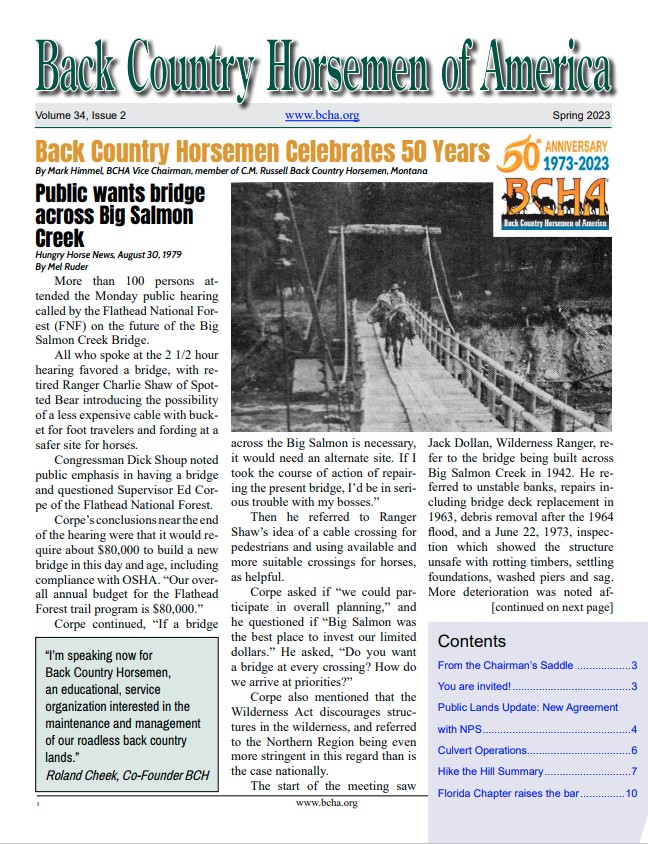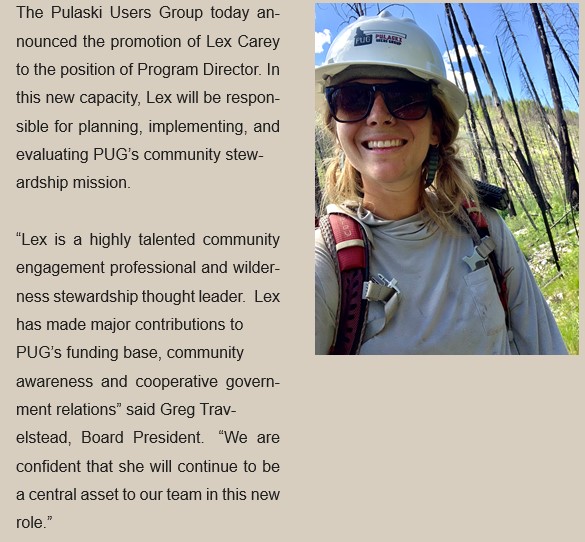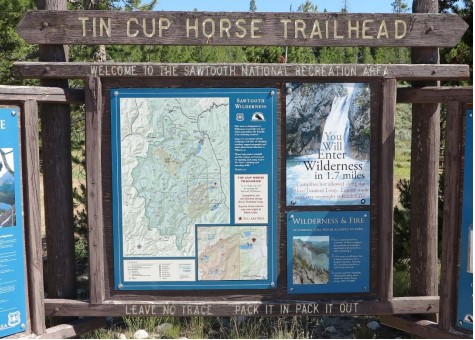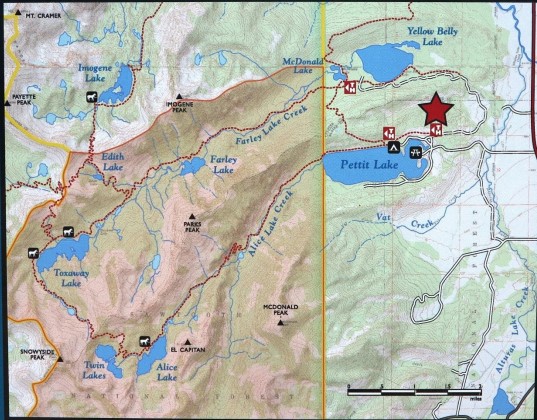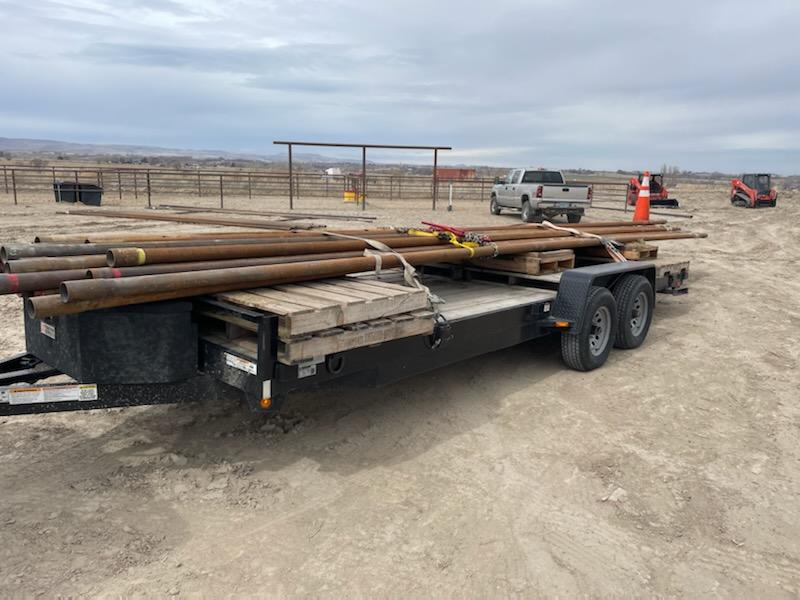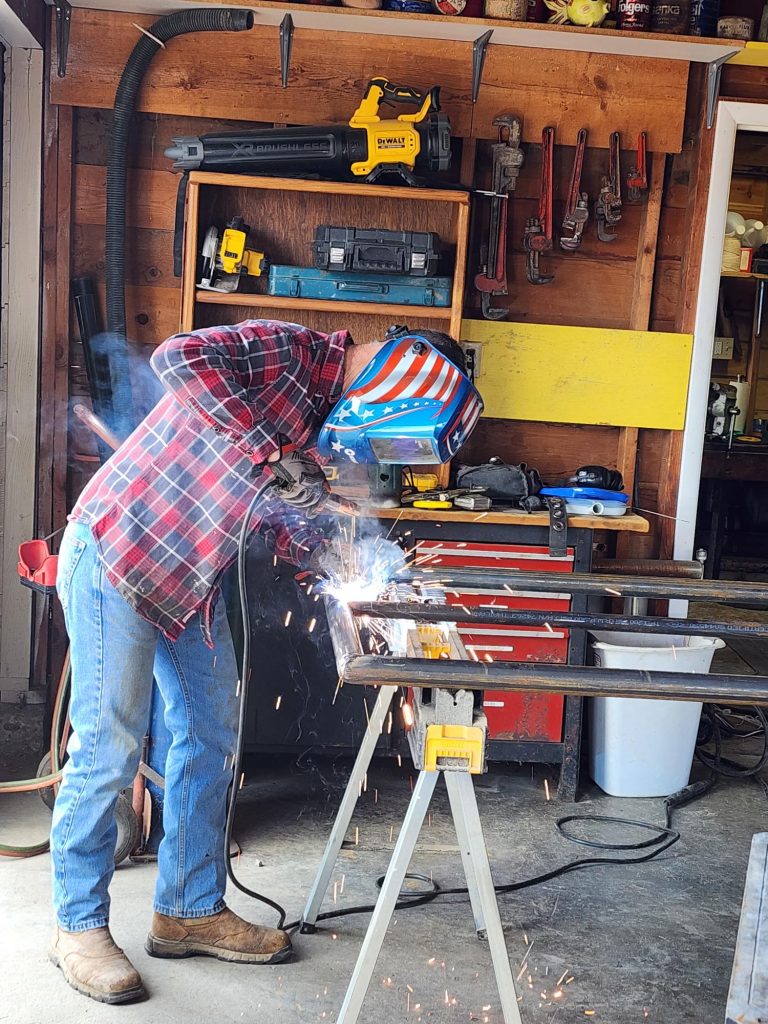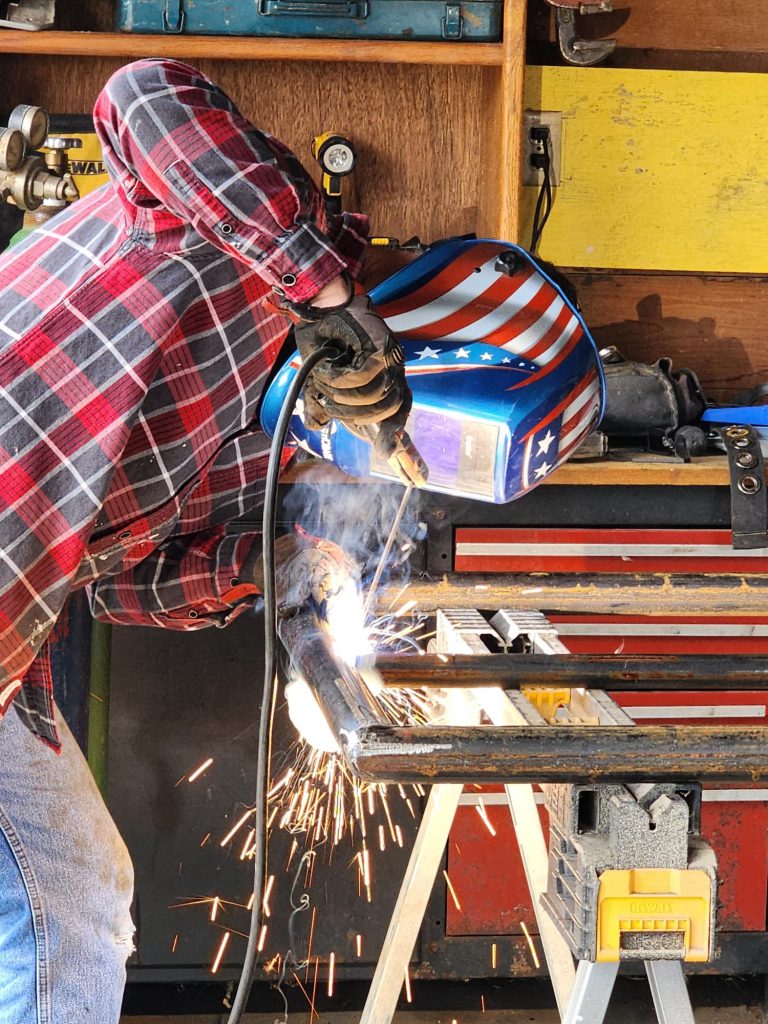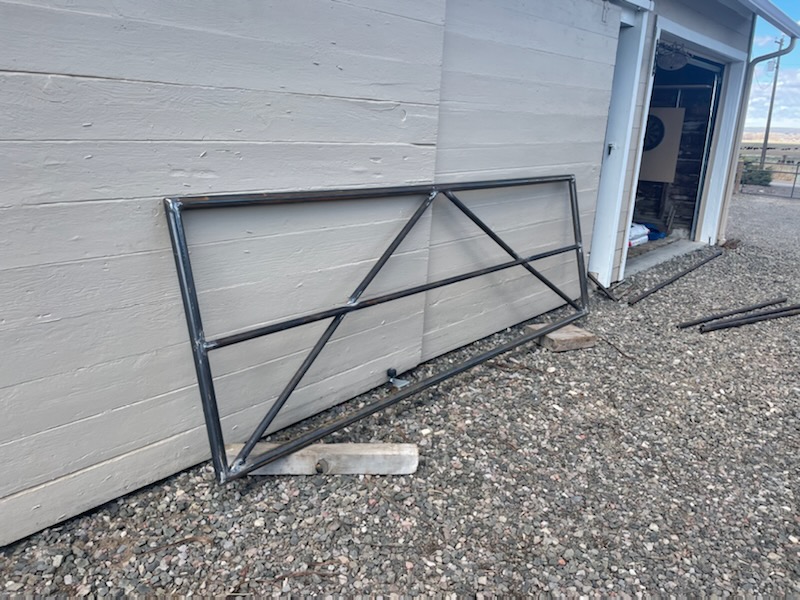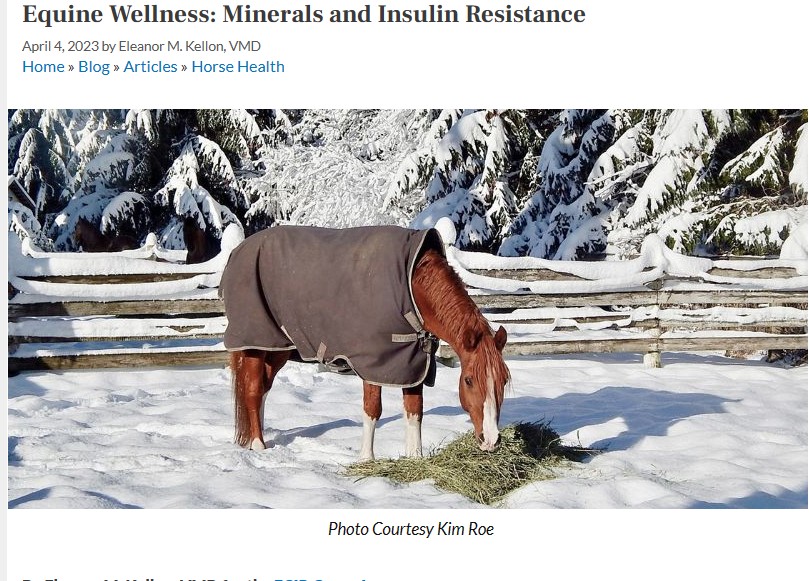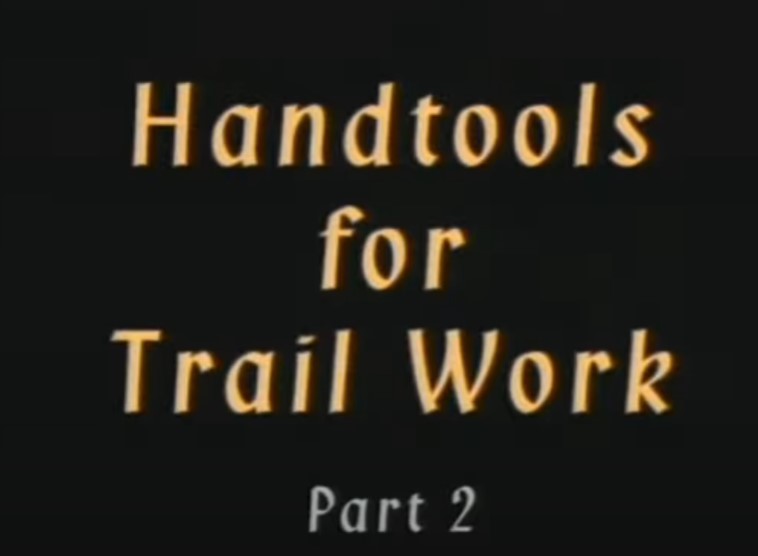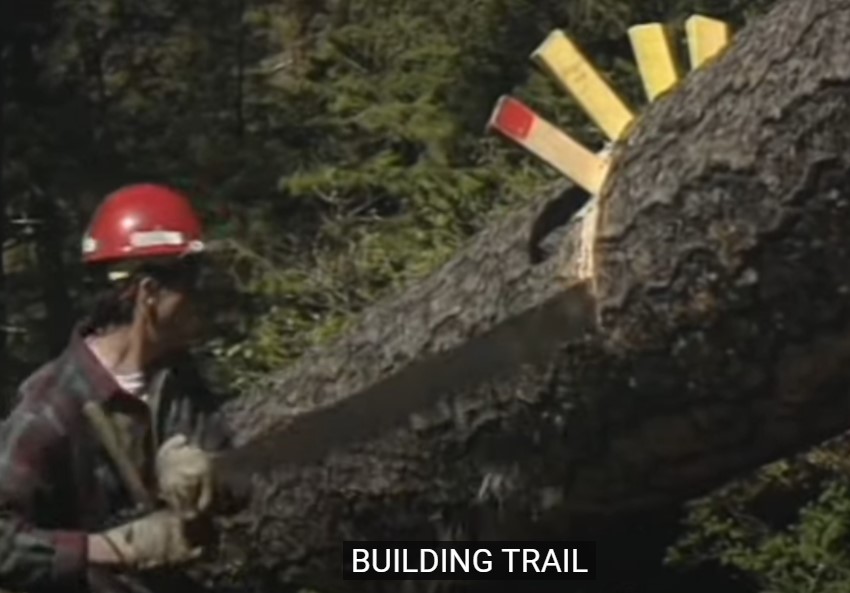The deer herd that resides within McCall’s city limits is once again up for discussion.
Idaho Fish and Game gave a presentation to McCall City Council, warning that the deer problem could get worse.
Through surveys done over the winter, Fish and Game now estimate the in-town deer population to be at least 258. It was noted that there is a high fawn-to-doe ratio, meaning the herd is growing.
“We learned that we have a minimum of 258 deer living in town during winter. We observed that they’re quite habituated to people,” Regan Berkley of Fish and Game said. “…We saw a very high fawn to doe a ratio… But the essence of what that means is this is a growing deer herd. The fawn-doe ratio that we observed here in town is nearly twice what we usually see at that same time in winter range on our natural herds.”
Fish and Game has recently taken 40-plus calls from people reporting dead/injured deer. Berkley said this number is likely higher as the McCall Police Department is also receiving reports.
The problem & past measures
There was a trapping effort in late January in Cascade led by Fish and Game. It was stopped after 75% of the 20 captured deer had exotic lice. Berkley said there is “no reasonable medication or treatment” for this.
“Those had exotic lice and had to be euthanized. We did not go into that as a euthanasia effort. We went into it with the hopes that we would be able to translocate most of the deer that we laid hands on. That turned out not to be the case,” Berkley said. “We stopped trapping after two days to regroup.”
There have been two cases of exotic lice found in McCall deer – this prevents relocation to winter range. In addition to spreading lice, there is also concern about the growing mountain lion population from the influx of deer.
Fish and Game have received over 50 reports of mountain lions since mid-January, most of which have been spotted around Rio Vista Boulevard and Spring Mountain Ranch.
“It is not atypical for us to have some reports of mountain lions in town any given winter we get a couple here or there. This winter has been remarkable,” Berkley said.
More issues that come from feeding include deer getting trapped in things like hammocks and Christmas lights, and aggressive deer.
“Although not exclusively, it is mama deer that likely have a fawn stashed nearby that no one can see because that’s how they deal with their fawn….then when someone comes walking along unwittingly with their dog, we get reports of dogs being threatened and or actually stomped by deer nearly every year,” Berkley said. “…We do occasionally have deer actually being threatening towards people – not letting people get in their front door and that sort of thing.”
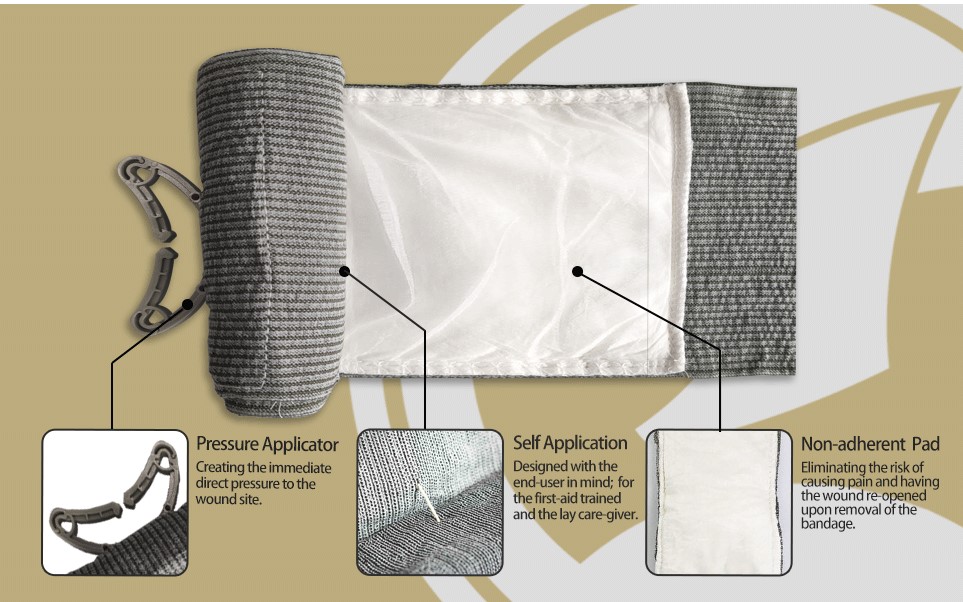
About this item
Non-pneumatic trauma bandage
Can apply 30-40+ lbs of pressure to the wound
Multi-functional bandage for various wounds
Compact, lightweight, waterproof, and vacuum sealed packaging
Sterile, best-in-class 8-year shelf life
Integrated pressure bar exerts immediate and direct pressure to the wound
Built-in closure bar: no pins, no clips, no tape, no hook-and-loop, no knots
Non-adherent 6″ pad eliminates pain during removal and prevents wound re-opening
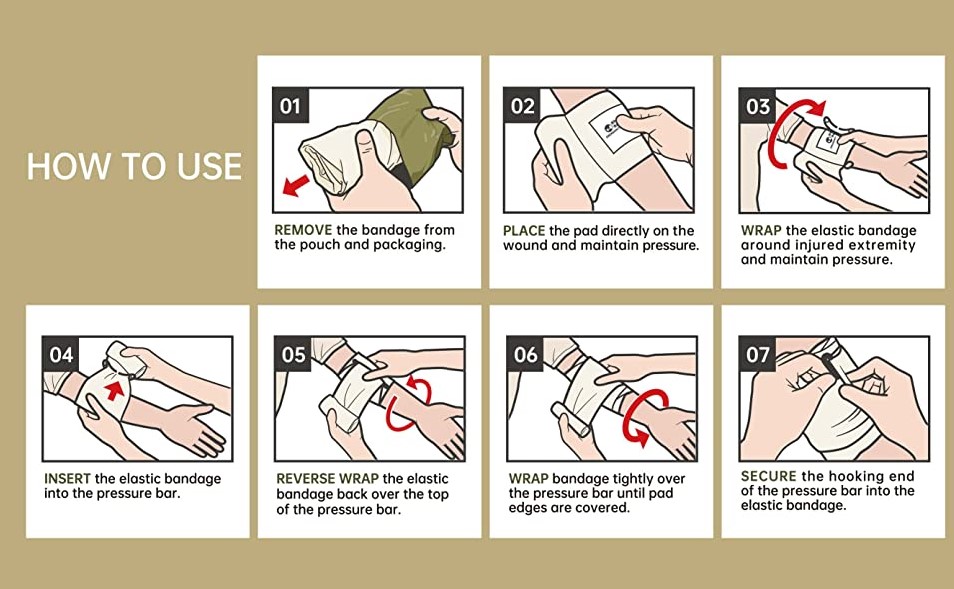
Want to brush up on your backcountry skills? We have some great (and free!) learning opportunities coming up. See our Upcoming Webinars and Events section below for more info about these in-person and online events:
- Backpacking 101: Four opportunities to learn more about backpacking both in-person and online including our first webinar TONIGHT!
- Safety and First Aid: One-hour webinar covering how to prepare for the worst when hiking.
- Backcountry Nutrition: Join Pam Bond and Tom Dabrowski to learn how to create your own backpacking meals!
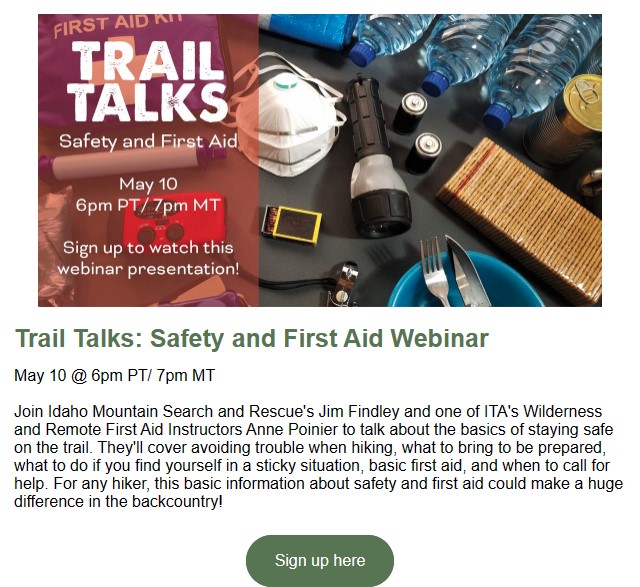
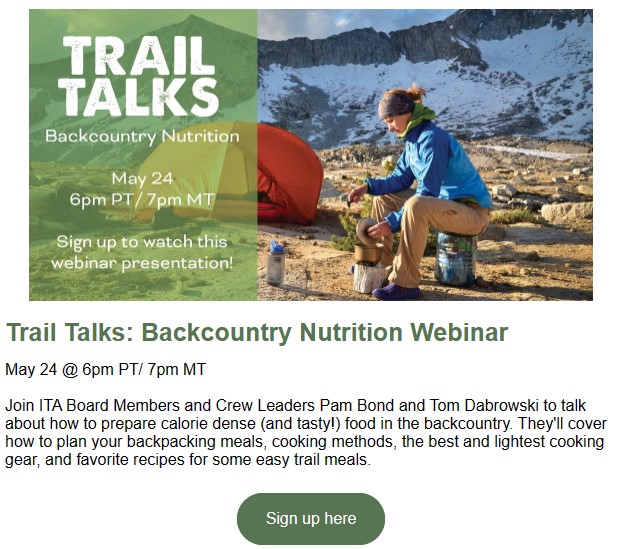
Trail Head Project – Pettit Lake – Stanley Basin Saturday & Sunday June 24-25, 2023
The Tin Cup Corrals Project is being lead by the USFS and involves multiple volunteer groups
with the plan to upgrade this trail head for horse camping and stock use.
Prime access to the Sawtooth’s.
More information about the project comming soon!
Past Pictures 2022 2019
Contact: Lisa Griffith 208-571-1054 projects@sbbchidaho.org
Getting ready for the project: (GRANT)
Dear Lisa,
I am pleased to inform you that the Sawtooth National Recreation Area License Plate Fund (Goat Plate Program) grant application that you submitted for 4Q2022 was approved. These funds are specifically dedicated for the construction and installation of two new corrals adjacent to the Tin Cup Trailhead in the SNRA. Please send your invoice to Kathryn Grohusky, Executive Director, at P.O. Box 820, Hailey, ID 83333 or to Kathryn@sawtoothsociety.org, and she will mail the check to you directly.
Just a reminder that at six months or midway through the grant (whichever is sooner) following award of your grant, you will submit an email status report. It should be emailed to the Society at grants@sawtoothsociety.org. The report should describe briefly what has been accomplished and how much grant money has been spent, and it should advise of the estimated completion date for the project.
Also, upon completion of the project, you will email a status report to the Society. The report should describe what was accomplished and how much grant money was spent (including copies of paid invoices), and it should indicate what, if any, financial assistance was received from other funding sources. Absent Society written approval otherwise, unused grant monies shall be returned at this time. Additionally, we would appreciate knowing how the Society was recognized.
The Sawtooth Society is pleased to partner with the Sawtooth Ski Club in helping to serve recreationists in the SNRA. Thank you for submitting the grant application and for working with the Sawtooth Society to preserve, protect, and enhance the SNRA.
Again, congratulations and all best regards,
Debra LaMorte, Chair, Sawtooth Society LPF Grants Committee
Purchasing Material & start Fabrication
Bart Baer building gates
A Balanced Intake of Key Minerals is Essential for the Support of IR Horses
Minerals have direct and indirect involvement in virtually every action in the body and have important effects on insulin resistance (IR) or its consequences. IR is different in the horse than in the human, but the same basic principles apply. There is evidence of activated antioxidant defenses in the tissues of IR horses.
Building the horse’s own antioxidant basic defenses is most effective. This includes the superoxide dismutase (SOD), catalase, and glutathione peroxidase enzyme systems, as well as the antioxidants glutathione, CoQ10, carotenoids and vitamin A, flavonoids, and vitamins E and C. Glutathione is particularly widely distributed.
SOD absolutely requires copper and zinc. Catalase requires iron, which is not an issue, as the typical equine diet supplies plenty of iron.
Glutathione activity depends on selenium, a very common deficiency. Selenium is also essential for the generation of the active form of thyroid hormone, T3, from T4. Selenoproteins, important to immune function, are just beginning to be looked at in depth. Both IR and pituitary pars intermedia dysfunction (PPID) horses are prone to inflammatory and allergic-type immune reactions rather than using the more sophisticated arm of the immune system.
Zinc is a commonly deficient mineral. Low serum zinc is associated with IR and type 2 diabetes in humans and rats. Supplementation of zinc supports defenses against type 2 diabetes in rat models; exactly why has not been determined. It is known that zinc is important on several levels as it’s involved in insulin release and sensitivity, as well as being an antioxidant in SOD.
Like zinc, copper is critical for SOD function. Copper deficiency causes IR and fatty liver in rats. Low liver copper is found in human fatty livers. Deficiency is also linked to higher liver iron in IR, a known problem in IR horses, too.
Magnesium has been associated with IR for 40 years, with hundreds of human papers dedicated to the subject. Magnesium is not a treatment, but by correcting a deficiency it makes the disease easier to control.
Magnesium dietary intake and magnesium status—whole body levels—are both associated with strong defenses against IR and they deteriorate when someone develops IR. It becomes a cycle you need to stay on top of to allow stabilization.
A 2013 study included almost 2000 non-diabetic subjects that were followed for 15.6 years. Magnesium intake was a “significant protective factor” against type 2 diabetes, including progression from IR to diabetes. Researchers could predict who would most likely become IR by looking at their magnesium levels.
Magnesium increases insulin receptor number and sensitivity in experimental rodent IR. Magnesium deficiency interferes with insulin signaling. Deficiency has also been linked to activation of allergic and inflammatory reactions.
Iodine is essential to production of thyroid hormone. Low iodine status has been identified in human patients with type 2 diabetes. Normal thyroid function is required for insulin sensitivity.
IR horses may also have low thyroid hormone levels in some cases. This is probably euthyroid sick syndrome, meaning it is an effect rather than a cause. In most of these horses, with correct levels of selenium and iodine, and control of IR, the levels will rise again. Low thyroid is not a primary part of the syndrome but can make some horses very depressed and lethargic. Thyroid supplementation can be used but by addressing the above you will not need supplementation long term.
Chromium has been important for people, probably due to processed foods being stripped of many essential minerals. It is required for a normal cellular response to insulin. The exact dietary requirement is unknown, but supplementation in IR horses is not helpful in most cases. Grass absorbs chromium very efficiently and soil levels are abundant in most areas. The ECIR Group has observed a problem only when horses are eating hay grown on alkaline soils where the plants may not absorb the chromium as readily.
It’s not as fancy as a pricey magic bullet supplement but the best place to start supporting your IR horse on a low-sugar and low-starch diet is with balanced intake of key minerals.
REFERENCES
Hata A, Doi Y, Ninomiya T, Mukai N, Hirakawa Y, Hata J, Ozawa M, Uchida K, Shirota T, Kitazono T, Kiyohara Y. Magnesium intake decreases Type 2 diabetes risk through the improvement of insulin resistance and inflammation: the Hisayama Study. Diabet Med. 2013 Dec;30(12):1487-94. doi: 10.1111/dme.12250. Epub 2013 Jun 29.
Hruby, A, Meigs J, O’Donnell C, Jacques P, McKeown N. Higher magnesium intake reduces risk of impaired glucose and insulin metabolism and progression from prediabetes to diabetes in middle-aged Americans. Clinical Trial Diabetes Care. 2014 Feb;37(2):419-27. doi: 10.2337/dc13-1397. Epub 2013 Oct 2.


An aggressive moose has been reported on a popular winter trail in the Caribou-Targhee National Forest near Georgetown. Members of the public have had recent encounters with this moose on the groomed trail extending beyond the parking area where Georgetown Canyon Road ends and Caribou-Targhee National Forest Road 102 begins. This part of the trail is groomed and maintained for winter recreationists, however Idaho Fish and Game is asking the public to please consider recreating elsewhere.
“We know it’s tough to ask people who enjoy this trail to recreate somewhere else, but avoiding this area is in the interest of both public safety and concern for the moose’s well-being,” says Jennifer Jackson, Regional Communications Manager for Idaho Fish and Game Southeast Region.
Though incidents with moose are usually rare, moose can be defensive if startled. In this case, the moose is dealing with harsh winter conditions and likely finds the groomed trail easy to navigate, and that is creating some conflicts for trail users.
“The moose has to be as tired of this long winter as everyone else is,” says Jackson. “Dealing with snowy conditions and human disturbance, it sounds like this moose has reached its tipping point and isn’t being tolerant of those who get too close!”
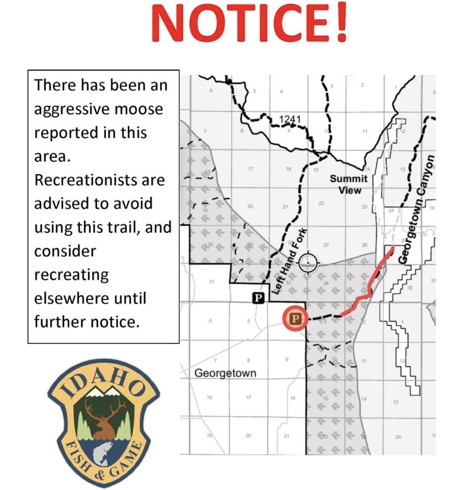
Though public safety is the main issue, Fish and Game is also concerned about the moose itself. The stress of being disturbed by trail users—even when unintentional—can cause the moose to burn its remaining energy reserves necessary to survive this severe and prolonged winter. In fact, Fish and Game is asking recreationists throughout the Southeast Region to give wintering wildlife their space and to consider avoiding areas used by wintering big game animals until winter conditions improve.
So, in spite of your best efforts to avoid moose on a trail, what do you do if you encounter one?
• Keep your distance, at least three car lengths between you and the moose. Never approach a moose, especially a female with her young.
• If recreating with dogs, maintain control of your pets with leashes and don’t allow them to chase moose or other wildlife. In fact, its unlawful to allow dogs to chase wildlife.
• A moose will often bluff by pawing the ground and licking its lips. If it lowers its ears, a charge is likely forthcoming!
• If a moose charges, run. Try to keep a tree or other object between you and the moose, or climb a tree if necessary.
• If you find yourself on the ground, curl in a ball and do your best to protect your face and head. Try not to make noise. Moose charge because they perceive you as a threat. If you are curled up on the ground quietly, you will likely appear less threatening.
• Discharging a can of bear spray may also deter a charging moose.
If you have any questions about recreating around wildlife or if you have a wildlife encounter to report in southeast Idaho, please contact Fish and Game at 208-232-4703.

